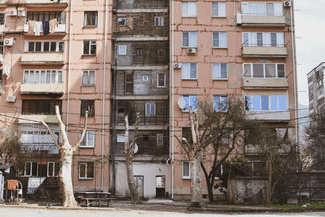To Fight Slumlords, LA County Launches Plan To Strengthen Housing Inspections
At a time when the COVID-19 pandemic has brought L.A.’s substandard housing and often lax enforcement into sharp focus, the county’s Board of Supervisors voted Tuesday to move forward with plans to strengthen housing inspections and code enforcement.

The plan calls for fines and penalties for landlords who fail to fix their buildings. Negligent property owners could even have rent payments withheld until they complete repairs.
“Many property owners maintain their rental properties and comply with state and local standards, but unfortunately, some do not,” said Supervisor Sheila Kuehl, who co-authored the motion with Supervisor Holly Mitchell.
“Leaks go untended. Mold festers. Rat and roach infestations go untreated,” Kuehl said in a statement. “The County needs stronger mechanisms to ensure that every renter in unincorporated Los Angeles has a healthy and safe place to live.”
Tenant Advocates Have Called For Stricter Enforcement For Years
Oscar Zarate — an organizer with Strategic Actions for a Just Economy (SAJE) who has been pushing the county to step up enforcement against slumlords for years — called the vote a step in the right direction.
“Slum housing is disproportionately concentrated in some of the most vulnerable communities, and I think this motion is going towards repairing that,” he said.
During the pandemic, SAJE has drawn attention to the plight of tenants trapped in substandard housing, sometimes rented out illegally. In one case, tenants in East Compton faced cockroach infestations, crumbling walls, lack of hot water and rent hikes deemed illegal by the county.
“The housing stock here in L.A. needs a lot of care. It needs a lot of accountability — especially for the landlords,” Zarate said. “We can’t have people living without hot water for two years. We can’t have little children living in roach-infested apartments.”
Centralizing The County’s Fractured Housing Enforcement
Unlike the city of L.A., which sends housing inspectors out to every multifamily rental property at least once every four years, the county does not routinely inspect all apartments in unincorporated parts of L.A.
Responsibility for housing enforcement in unincorporated L.A. County is currently split between five different departments. That fractured system often results in impenetrable bureaucracy for tenants hoping to fix habitability problems, and frequently lets landlords off the hook for neglect.
Currently, the county’s Department of Public Health (DPH) is responsible for fielding tenant complaints about issues such as vermin and lead paint. The department also conducts unannounced annual inspections for some of the county’s nearly 120,000 units of rental housing.
But DPH does not handle problems related to building code violations, illegal units or unlawful rent increases. Tenants have to communicate with a hodgepodge of different departments to get those issues addressed.
Tuesday’s unanimous supervisors vote instructs DPH and other county departments to craft an ordinance that would establish a more centralized Rental Housing Habitability Program. Among other things, the proposal calls for this program to
- Cover all rental housing in unincorporated L.A. County, including units rented out illegally
- Require inspections of all rental units at least once every four years
- Create a “rent escrow program” that would withhold rent payments from negligent landlords until repairs are made (similar to the city of L.A.’s REAP program)
- Explore ways for the county to acquire properties in cases involving extreme neglect
- Charge landlords an annual registration fee to cover the cost of the inspection program, giving landlords the right to pass 50% of the fee on to tenants
How COVID-19 Trapped Renters In Dilapidated Homes
During the pandemic, longstanding problems with building code violations and health hazards became inescapable for tenants who found themselves stuck at home due to workplace closures and public health restrictions.
At the same time, local governments such as the city of L.A. dramatically cut back on housing inspections, allowing problems to fester.
“We’ve seen a lot of deferred maintenance during the pandemic, which I think speaks to the need for this kind of a program,” said Sasha Harnden, a public policy advocate with the L.A.-based Inner City Law Center.
“That makes it even more important that homes be healthy [and] safe, and that landlords are living up to their legal obligations in terms of maintaining that housing,” Harnden said.
Landlords Fear Bloated Bureaucracy
At a time when many small landlords in Los Angeles are still struggling to obtain rent relief, groups representing property owners reacted to the L.A. County proposal with concerns about overreaching bureaucracy.
“Everyone is entitled to safe and habitable housing,” said Fred Sutton, a spokesperson for the California Apartment Association. “It’s important, however, that any new regulations focus on chronic violators — those with a history of non-compliance. Responsible rental operators should not be caught in a maze of bureaucracy and administrative burdens.”
It’s not yet clear how much money the county would need to collect for the proposed inspection program. But Apartment Association of Greater Los Angeles Executive Director Daniel Yukelson said landlords and renters alike would end up shouldering the cost.
“These types of unnecessary, ‘pile-on’ fees and taxes imposed by government are what leads to higher housing costs and increased rents,” he said. “And in California, our elected officials seem to have an insatiable appetite for more and more fees and taxes.”
However, none of these changes will go into effect anytime soon. The supervisors laid out an 18-month timeline for developing the new code enforcement program. And Tuesday’s motion estimates that it could take two years before inspectors start entering homes.
Source: LAist















 Accessibility
Accessibility